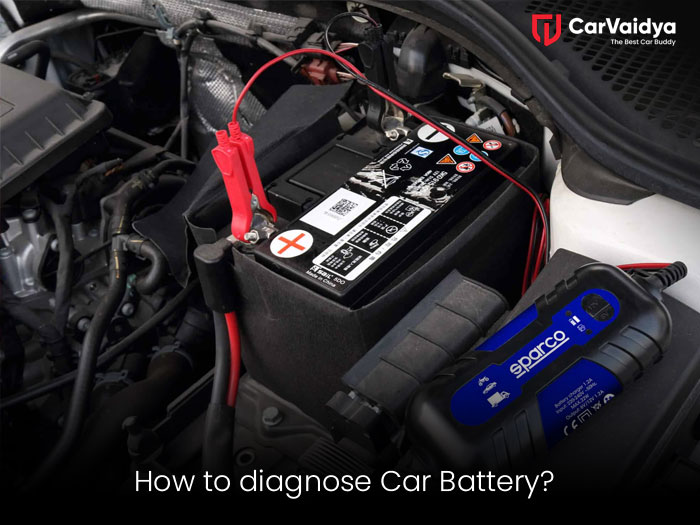When you try to start a car and doesn’t work. You don’t receive any kind of engine roaring sound or any response from the car. Then first thought comes to mind about the car battery being dead. But there may be a possibility that the car battery got discharged. We need to understand the very crucial difference. In this article, we will share the intricacies of car batteries, explore common symptoms of a dead or discharged battery, and provide you with the information to diagnose and resolve the issue effectively.
Understanding Car Batteries
Before going into the diagnostics of car batteries, let’s go through a basic understanding of car batteries.
Composition and Function
Car batteries, typically lead-acid batteries, consist of lead plates submerged in an electrolyte solution. When the car driver turns the key, the battery works to provide an electrical current to power the car starter motor, igniting the engine.
Charging and Discharging
During operation, the alternator replenishes the battery’s charge, ensuring it remains ready for the next start. However, when the engine is off, the battery can discharge due to various factors, such as accessory usage or electrical system draws.
Lifespan and Maintenance
Car batteries have a finite lifespan, typically ranging from three to five years. Regular maintenance, such as checking terminals for corrosion and ensuring proper charging, can extend battery life.
Symptoms of a Discharged Battery
A discharged battery exhibits distinct symptoms
Dim or Flickering Lights
When you attempt to start the car, you might notice the interior lights dim or flicker. This indicates insufficient power to engage the starter motor.
Clicking Noises
As you turn the key, you may hear rapid clicking noises emanating from the engine bay. These clicks signify the starter solenoid engaging but lacking adequate power to turn the engine.
Accessory Malfunctions
If electrical accessories, such as power windows or radios, operate erratically or fail to function altogether, it could signal a discharged battery.
Slow Cranking
When you turn the key, the engine may crank slowly or sluggishly, suggesting insufficient power to start.
Indications of a Dead Battery
A dead battery presents distinct symptoms as well:
Complete Silence
When you turn the key, there’s no sound whatsoever – no cranking, no clicking. This silence typically indicates a dead battery incapable of delivering any power.
Dashboard Warning Lights
Certain modern vehicles display dashboard warning lights, such as a battery icon, indicating battery-related issues.
Corrosion and Physical Damage
Inspecting the battery terminals reveals corrosion or physical damage, indicating potential battery failure.
Diagnostic Procedures
Now that we’ve outlined the symptoms, let’s discuss diagnostic procedures:
Visual Inspection
Begin by visually inspecting the battery and terminals for corrosion, physical damage, or loose connections. Clean any corrosion with a wire brush and ensure terminals are tightly secured.
Voltage Testing
Using a multimeter, measure the battery’s voltage. A fully charged battery should read around 12.6 volts. Anything significantly lower suggests a discharged or dead battery.
Load Testing
If the voltage appears low, conduct a load test using a specialized battery tester. This test applies a load to the battery while monitoring voltage and assesses its ability to hold a charge under load.
Alternator Testing
A faulty alternator can mimic symptoms of a dead or discharged battery. Test the alternator’s output voltage to ensure it’s charging the battery properly.
Resolving the Issue
Based on diagnostic findings, you can implement appropriate solutions
Recharging
If the battery is discharged but still functional, recharging it using a battery charger or jump-starting the car may resolve the issue temporarily. Once charged, monitor the battery’s performance and address any underlying causes of discharge.
Replacement
For a dead battery or one unable to hold a charge, replacement is necessary. Consult your vehicle’s manual for compatible battery specifications and ensure proper installation.
Professional Assistance
If diagnostic procedures prove challenging or if you lack the necessary tools, seek assistance from a qualified mechanic or automotive technician. They possess the expertise and equipment to diagnose and resolve complex battery issues effectively.
Preventive Measures
To mitigate future battery issues, consider implementing preventive measures:
Regular Maintenance
Schedule periodic battery inspections as part of your vehicle maintenance routine. Clean terminals, check fluid levels (for non-sealed batteries), and inspect for signs of wear or damage.
Limit Accessory Usage
Minimize accessory usage when the engine is off to reduce battery drain. Avoid leaving lights, radio, or other electrical components running unnecessarily.
Extreme Temperatures
Extreme temperatures can accelerate battery degradation. Park your vehicle in shaded areas during hot weather and utilize battery blankets or insulation in cold climates to maintain optimal performance.
Diagnosing car battery issues requires a systematic approach and understanding of symptoms associated with discharged and dead batteries. By conducting visual inspections, voltage testing, and load testing, you can accurately identify the underlying cause and implement appropriate solutions, whether recharging, replacement, or seeking professional assistance. Additionally, adopting preventive measures, such as regular maintenance and prudent usage habits, can prolong battery life and minimize future issues. With this knowledge in hand, you can confidently address car battery issues and ensure reliable vehicle performance.
You can read some other articles
Why used car inspection & Valuation are important
Common mistakes to avoid while Driving a manual car
Top 10 Maruti Suzuki workshops in Lucknow

